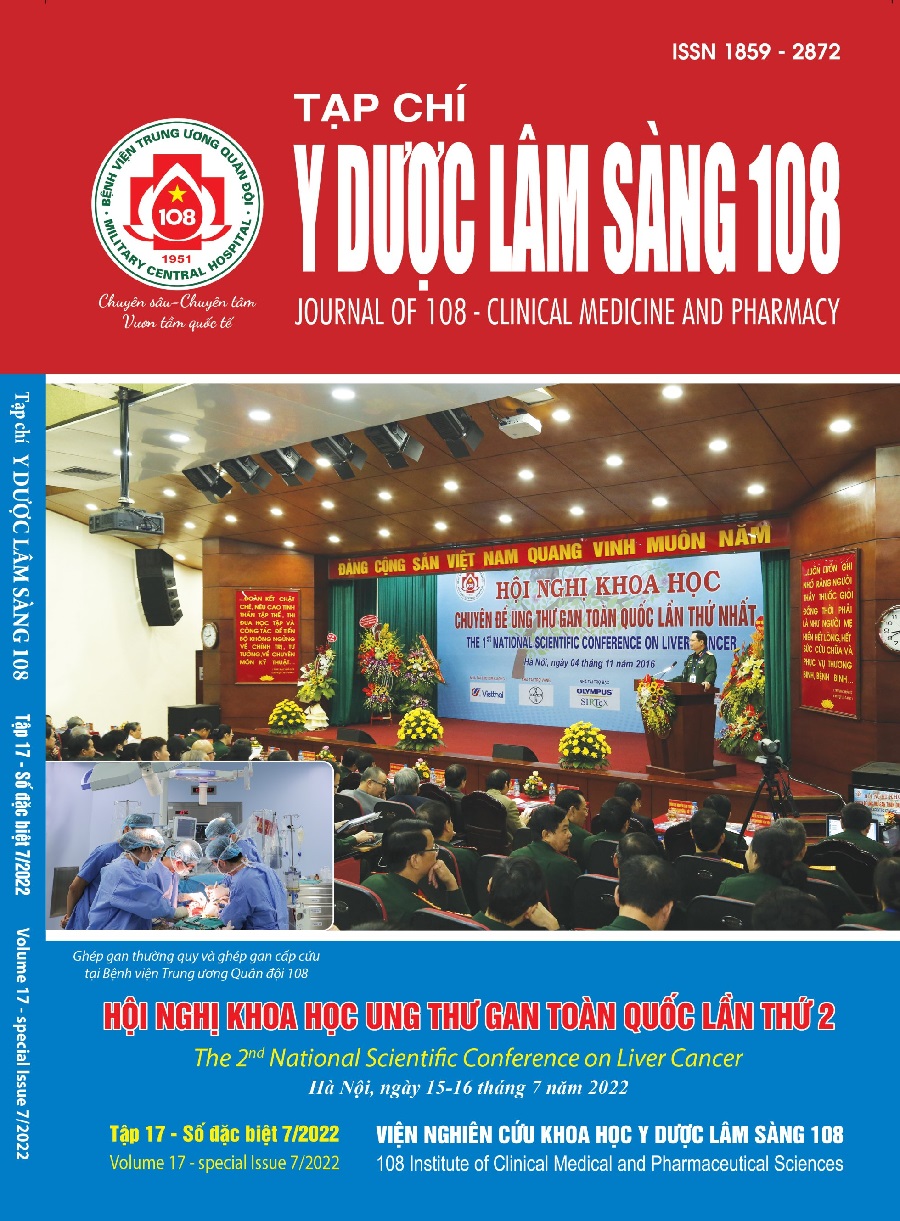Hepatocellular carcinoma at Liver Tumor Department, Cho Ray Hospital: Cancer registry 2010-2021
Main Article Content
Keywords
Abstract
Objective: To examine the situation of hepatocellular carcinoma at Liver Tumor Department of Cho Ray hospital from 2010 to 2021 and its relationship with viral infection (HBV and HCV). Subject and method: Retro-observational study. Data on age, genre, geography, factors related to hepatocellular carcinoma (viral infection, possibility of treatment) was obtained from 2010 to 2021. Result: Data from 42495 HCC patients were extracted, comprising 83.04% male. Male/female ratio was 4.57/1. Mean age was 58.9 years. 92.2% were older than 40 years old, mainly from 50 to 70 years old. This patient sample derived from numerous provinces throughout Southern Vietnam and Southern of Central Vietnam (50.2 millions people), including 41.78% from Mekong River Delta (17757 patients/17.3 millions people/13 provinces), 14.34% from HoChiMinh City (6095 patients/9 millions people), 16.99% from SouthEast region (7222 patients/8.8 millions people/5 provinces), 16.21% from South Central Coast (6890 patients/9.2 millions people/8 provinces), and 8.89% from Central Highland region (3778 patients/5.8 millions people/5 provinces). HBV infection was found in 58.91% of cases, HCV infection was found in 22.86% of cases, while HBV and HCV co-infection was found in 2.58% of cases. 11.33% patients had no virus infection. Over this 10-year period, the number of HCC cases was still in high level, with a large proportion of cases (21521 patients/50.64%) presenting initially in far advanced stage, and not amendable to locoregional or surgical therapy, 19523 patients (90.72%) of this group were older than 40 years old, mainly from 50 to 70 years old. These patients did not receive any alternative therapy, except best supportive care. Conclusion: HCC is found to contribute significant health care burden, the number of cases has increased in over last twelve years (2010-2021). Most of cases have HBV and HCV infections. We should improve the management, treatment and monotoring system of viral hepatitis patients to reduce the incidence of HCC and enhance the HCC surveillance on at-risk subjects to increase early detection rate of HCC.
Article Details
References
2. Bộ Y tế (2020) Hướng dẫn Chẩn đoán và Điều trị Ung thư biểu mô tế bào gan tại Việt Nam 2020 - Quyết định 3129/QĐ-BYT (17/07/2020).
3. Globocan Data: https://gco.iarc.fr/today/data /factsheets/populations/704-viet-nam-fact-sheets. pdf. Accessed 04/19/2022.
4. Lee CM, Lu SM, Changchien CS (1999) Age, gender, and local geographic variation of viral etiology of hepatocellular carcinoma in a hyperendemic area for hepatitis B virus infection. Cancer: 1143-1150.
5. Omata M et al (2017) Asia Pacific clinical practice guidelines on the management of hepatocellular carcinoma: a 2017 update. Hepatol Int 11: 317-370.
6. Seeff LB et al (2006) Epidemiology of hepatocellular carcinoma in area of low hepatitis B and hepatitis C endemicity. Oncogene 25(27): 3771-3777.
7. Manthey J, Shield KD, Rylett M, Hasan OSM, Probst C, Rehm J (2019) Global alcohol exposure between 1990 and 2017 and forecasts until 2030: a modelling study. Lancet. 2019 Jun 22;393(10190): 2493-2502. doi: 10.1016/S0140-6736(18)32744-2.
 ISSN: 1859 - 2872
ISSN: 1859 - 2872
